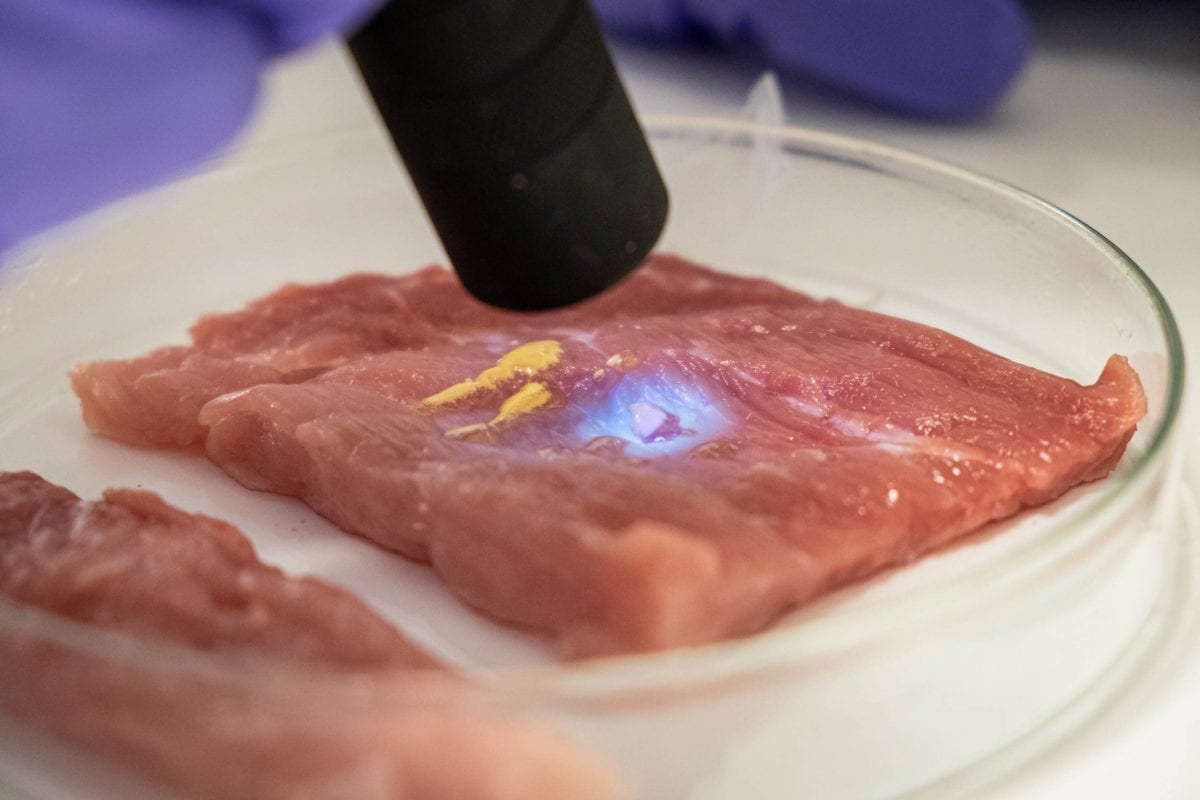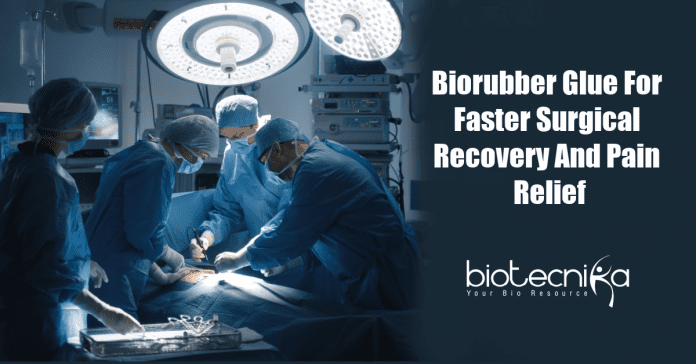Biorubber glue for faster surgical recovery and pain relief developed by NTU
A new type of surgical glue that can help in joining blood vessels as well as close wounds faster was developed by the materials scientists from Nanyang Technological University, Singapore (NTU Singapore). Additionally, this glue might act as a system to deliver pain relief medicines.
The outcomes of the research on “Biorubber glue for faster surgical recovery and pain relief” are published in the journal Biomaterials. The NTU scientists worked on this research is a collaboration with clinicians from Singapore General Hospital (SGH). The study reveals that even when the surfaces are wet their glue can bond soft tissues including muscle as well as blood vessels.

They named it as CaproGlu, and it is activated by a reduced dosage of UV light that cures it in seconds, and it turns into a flexible solid biorubber from liquid glue, and it is made up of a biocompatible material that can be resorbed by the cells within a few weeks of time.
The research group showed in animal models that blood vessels
can be rejoined with just 4 stitches as well as a mesh wrapper dipped in CaproGlu, otherwise, it would take eight stitches. The scientists estimate that this will lower surgical procedure time by 25%, as surgeons spend less time and effort stitching up tissues and blood vessels.Additionally, CaproGlu can be utilized to deliver local anesthetics or pain relief medicine to tissues in the body, which may be useful both throughout and after an operation and would certainly reduce the requirement for pain relief drugs.
The CaproGlu is a one-pot liquid gel solution that comes ready-to-use, unlike existing bio-adhesives which need two chemicals to be mixed before using.
Terry W.J. Steele, Associate Professor, and Dr. Ivan Djordjevic, Senior Research Fellow were the lead authors of the study, they emphasized that many surgical adhesives available in the market do not work in water or damp atmospheres like the human body.
Associate Professor, Terry W.J. Steele said that the glue was first engineered to remove water from the surface to make the light-activated glue work on wet tissues, and thus allow adhesion to the dried surface.
He added that the advantages that make CaproGlu so suitable to be utilized in medical applications and surgeries are being able to bond in a wet environment with high strength, as well as being biocompatible.
A comparison study between CaproGlu and other commercial bioadhesives was carried out to determine the adhesion strength. The outcome showed that CaproGlu is 3-7 times stronger than other bioadhesives, as well as is on a par with the shear strength of collagen as well as muscle tissue found in the body.
Advantages of CaproGlu
CaproGlu is designed by Associate Professor Steele and Dr. Djordjevic from the NTU School of Materials Science and Engineering, there are two ingredients in CaproGlu which are combined into a single-component formulation that does not require additives.
The initial ingredient is polycaprolactone – a biodegradable polymer that has been approved by the U.S. FDA for specific applications utilized in the body. The second ingredient is diazirine, a light-sensitive molecule when activated diazirine can form strong bonds.
In the study, the researchers used stitches in combination with an adhesive to show how exactly CaproGlu could be used as part of a new surgical approach. They used 4 stitches to join both ends of blood vessels in a rabbit, and also wrapped the vessel ends with a biodegradable mesh dipped in CaproGlu and treated with a little dose of UV light which crosslinked the amino acids on the tissue’s surface, instead of 8 stitches which are conventionally used.
After using this glue the artery completely recovered after 7 days, as well as the bleeding from the artery immediately after the procedure, was similar to what is observed from the conventional method.
In another experiment, before closing the wound using the conventional method, CaproGlu filled with anesthetics was inserted within rats’ calves and cured them with UV light.
The activity of these rats was compared with two other controls: rats that had only received anesthetics and rats that had received only CaproGlu. The study showed that rats that had anesthetics as well as CaproGlu packed with anesthetics did not show any visible impediment of movement. This suggests that CaproGlu is successful in delivering local anesthetics over time, it could be a helpful method to prolong local anesthesia past its existing limits and it could be used to avoid an extreme blood clot by using it as a drug delivery platform for drugs such as anticoagulants.
The animals which had CaproGlu implanted in their skin did not show any noticeable adverse effects, which implies that it is safe and biocompatible as anticipated. Follow up clinical visits would not be needed for its removal, as the bioadhesive dissolves as well as resorbs within weeks.
Stable shelf life after sterilization
As of now, the biggest challenge for bioadhesives in the market is to cope with the standard method through which surgical grade equipment as well as disposables are disinfected using gamma irradiation, which triggers bonding in both acrylate and epoxy adhesives and destroys proteins.
The protein-free solution formulation of CaproGlu exploits new crosslinking chemistry unaffected by gamma sterilization, unlike other surgical adhesives.
Even after several months of storage and gamma sanitation, the light-activated bonding mechanism develops chain links to amino acids at the nanoscale level, thus making CaproGlu’s production and commercialization possibly much less costly than those based upon acrylates and proteins.
Biorubber glue for faster surgical recovery and pain relief developed by NTU
Author: Sruthi S
































